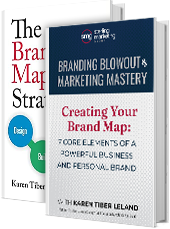Summary:
This article discusses the concept of transforming a noun into a verb in company branding, illustrated by the example of “moose” becoming synonymous with a cabin lifestyle. It explores the process of “verbing” or “anthimeria” and provides steps for businesses to follow to achieve this linguistic shift in their branding strategy. Additionally, it warns of the potential trademark issues associated with genericization and emphasizes the importance of simplicity and socialization in building up a brand’s verbal identity.
One of my greatest lessons in company branding happened years ago I went to visit some friends who lived in South Lake Tahoe. As I came over the crest of the hill, the panoramic view opened up before me. White snowy mountains, a deep blue lake, and crisp green pine trees–I was hooked.
So hooked in fact that I decided to buy a cute cabin in a quiet neighborhood a few short blocks from the lake. As part of my ownership obligation, I was advised by my local realtorto make my new home as “cabiny” as possible. The reasoning behind this was that renters apparently expect a Tahoe cabin to look, well–like a Tahoe cabin.
When I inquired as to what exactly comprised this mountain-esqe decor, I was shown images of log furniture, pinecone ornamentation, and anything with a moose on it–moose placemats, moose lampshades, moose pencil cup holders, and yes, even a moose toilet paper holder.
Despite the fact that no actual moose have been seen in South Lake Tahoe for decades, the moose theme is so synonymous with cabin life that my friend Lynette and I coined the term “moosey” as a kind of shorthand to represent all things South Lake Tahoe–decoration-wise, that is.
Essentially we had transformed the word “moose” from a noun to a verb. For example, my cabin did not need an interior design update. Rather, it was in need of a moose-i-fication makeover and some moose-ing up.
The slang name for this process is “verbing.” The official term, according to etymologists, is “anthimeria,” meaning a functional shift in the use of a word.
Successful brands do this all the time. Google has now become so associated with the activity of searching the web that regardless of the search engine you may be using (Yahoo!, Bing, YouTube, etc.) the common expression is “I’m going to Google that.”
Hoping to turn a noun into a verb in your business? Bear in mind that this requires a fair amount of fate–one communications professor, Scott R. Hamula of Ithaca College, says it’s “more aspirational than achievable and involves a lot of serendipity.”
Regardless, here are three steps you can follow to help lady luck moosify (so to speak) your brand:
1. Company branding means replacing a sentence for a single word.
Brands that become verbalized replace sentences that represent actions with single words. For example, people don’t say, “I will Gmail that” because a word for that–“email”–already existed. They do however say, “I’ll Uber,” because prior only a sentence such as “I’m going to call a car service to get home from the party,” could convey the idea.
Ask yourself:
- What actions do people take when they use your service or product?
- Is there a current word that exists for that? If not, is there a single word you can extract to represent the action?
- Are you the first to bring this to market? If not, is there an aspect of what you are doing that is first?
- Is there a way we can make our brand an “ing” so that it is a thing?
2. Keep it to two or three syllables.
A Skype call, Google search, Photoshop image, or FedEx package. All of these have one thing in common: They’re simple to say and contain very few syllables. In general the shorter and sweeter you can keep the term, the greater the chance you have that it will catch on.
3. Socialize it and build up your company branding.
The more you can use your noun as a verb in your marketing collateral and conversation with your customer base, the stronger the possibility that it will become verbalized. For example, Twitter created and promoted the idea of “tweeting”–and now even presidents do it.
One word of warning.
Turning your company branding into a verb can potentially endanger the trademark, if it becomes the generic term for the product or service; i.e., Xerox (for copies) and Kleenex (for tissues). Barbara Findlay Schenck, coauthor of Branding for Dummies, points out that Rollerblade inline skates spends heavily to educate consumers that rollerblading isn’t a sport; it’s a specific brand.
Consider the trademark case where Windsurfer applied for a wind-propelled, surfboard-like apparatus patented in 1968. The term was presented as a verb (windsurfing) to describe the sport of sailboarding, and the courts found the mark to be generic and no longer protectable.
If all this has your head spinning and you feel like you might need some time to step back and think about how to verbalize your brand, I’ve got a nice cabin in the woods that’s all moosed up and ready to go.
Resources for Social Media Strategy, Brand Strategy, Personal Brand, CEO Branding and Marketing Strategy
At SMG we serve clients across the United States, Europe, and Asia. Currently, we have 3 onsite locations:
- Looking For a New York City Brand Strategist or Social Media Specialist? Book a Consult
- Want a Business Brand Strategy Session in Austin, Texas? Book a Consult
- Need Some Help with CEO or Personal Branding San Francisco Bay Area? Book a Consult
This article originally appeared on Inc.com.
